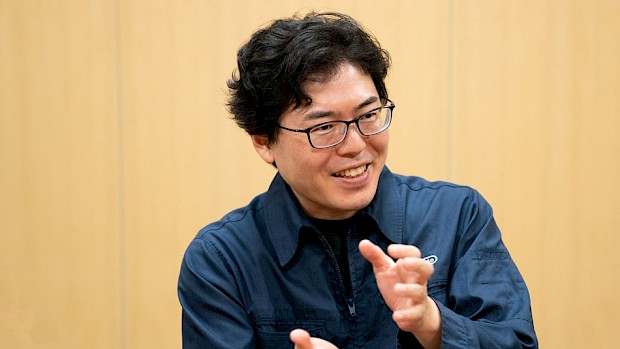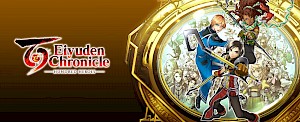Pikmin 4 Developer Interview Part 2

Posted 20 Jul 2023 at 10:21 by Joshua Phillips
Part 1 of the Pikmin 4 developer interview delved into the origins of the series, as developers from across various titles in the franchise shared stories and art of early Pikmin ideas and inspirations.
As we head into part 2, the developers delve deeper into what we can expect in the upcoming Switch title, Pikmin 4. Just what is Dandori? How did Oatchi come to be? How have they addressed concerns over difficulty from previous titles?
Part 2 interviews Kando, Hiramuki, Matoba, Kida and Miyamoto-san.
Kando:
I joined the development of Pikmin 4, continuing on from Pikmin, Pikmin 2, and Pikmin 3. I was the chief director and programming director for this title. To be more specific, I was in charge of the general game design and level design, the base programming of the game system, and deciding on the game's direction.Hiramuki:
Hello, I'm Yutaka Hiramuki, one of the planning directors for this game. I was responsible for overseeing the overall level design, creature specifications, and the story, including cutscenes and script. Actually, I've been involved in the series for a long time.Matoba:
Hi, I'm Taku Matoba, one of the planning directors. I was mainly involved in the UI, the design and placement of in-game objects, and treasures. I also shared the workload with Kando-san and Hiramuki-san on the level design. In the second game, I was involved in creating the underground caves, and in the third game, creating the versus mode.Kida:
Hello. I'm Mitsuhiro Kida, the sound director. I managed the background music and sound effects in consultation with our staff and determined how best to bring out the sounds. I've been involved in the series since Pikmin 3 Deluxe.
One point of concern from long-time fans recently emerged on social media after the demo for Pikmin 4 was released, as many were under the impression that this story could be a retelling or reimagining, but Hiramuki confirms that this is the same world and same Olimar, and it just so happens that he has crashed again. Someone needs to make him take a new driving test!
Hiramuki:
This game begins with Captain Olimar once again crash-landing on an unknown planet. However, what makes the game different from the previous ones is that he sends out a distress signal, and the Rescue Corps comes to his rescue, but they also crash-land. As the newest recruit, the player embarks on an adventure to rescue the castaways.To make it easier for newcomers to get emotionally invested in the world of Pikmin, we designed the game so that players themselves would become the Rescue Corps' new recruit. So, even if you're not familiar with past titles, you'll be fine. Of course, we've put thought into developing features that add to the fun for players of the previous titles, so they've got plenty to look forward to. As for the story's timeline, I'll leave that to players' imaginations. (Laughs)
Miyamoto touches upon how the series is known as being ‘too hard’ and how they wish to mitigate that with some new changes to Pikmin 4, as well as how this may have impacted sales in the past. He also mentions how players will get better over time with the use of Dandori, a Japanese term that means, "to think about planning and efficiency in advance to get things done smoothly".
Miyamoto:
I get that people find it more difficult when death is a factor. But I think the franchise's strength lies in its relationship with mortality. If something is irreversible, you need to figure out a way to prevent undesired things from happening. To try to prevent Pikmin from dying, you need to practise "Dandori". To me, that's what makes this game unique.
New Pikmin types and features will also help mitigate the difficulty found in previous titles.
Hiramuki:
The new Ice Pikmin have the ability to freeze things, and they were popular among players who weren't skilled at battles against creatures in the survey conducted by Mario Club. With Ice Pikmin, you can freeze both enemies and bodies of water. When you freeze flying enemies, they fall and shatter.Matoba:
Glow Pikmin are another new type who help you in caves and in the newly added night expeditions. They're reliable companions in your exploration, as they're resistant to almost all elements and warp back to you once they've completed their task without having to be called back. Since Glow Pikmin can't die, players can use as many of them as they want without worrying about the consequences. This is another element that makes this game easier to play.Hiramuki:
In this game, players can go back in time and start over at any point with a feature called "Rewind Time". Previous games only let you go back to the morning, no matter what time of day it was, but now you can go back to just a few minutes ago when you realise you've made a mistake. This makes it easier to quickly try out new strategies.Kando:
Until now, it was common for players to be in a situation like, "I've worked so hard to plan everything and get to this point, but I made a mistake on the very last move, and my Pikmin died… I have to go back to the morning and start all over again…". It's sad when that happens, so we've implemented this rewind feature to support players facing such a predicament.
Elsewhere in the interview, the developers reveal how at one point you could play as a Bulborb and go on a rampage to eat Pikmin! This later evolved into Pikmin riding various enemies in the game, but it still didn’t fit right with the developers, so they eventually ended up with the large, adorable ally that is Oatchi the space-dog.
It’s also revealed that the game has a more open approach than the previous, more linear experiences, taking a leaf out of modern Zelda titles. They also explain how extra features found in previous titles, such as multiplayer and challenge modes, have been weaved into the main adventure.
You can read the entire interview in full on the Nintendo website, by clicking here!





















